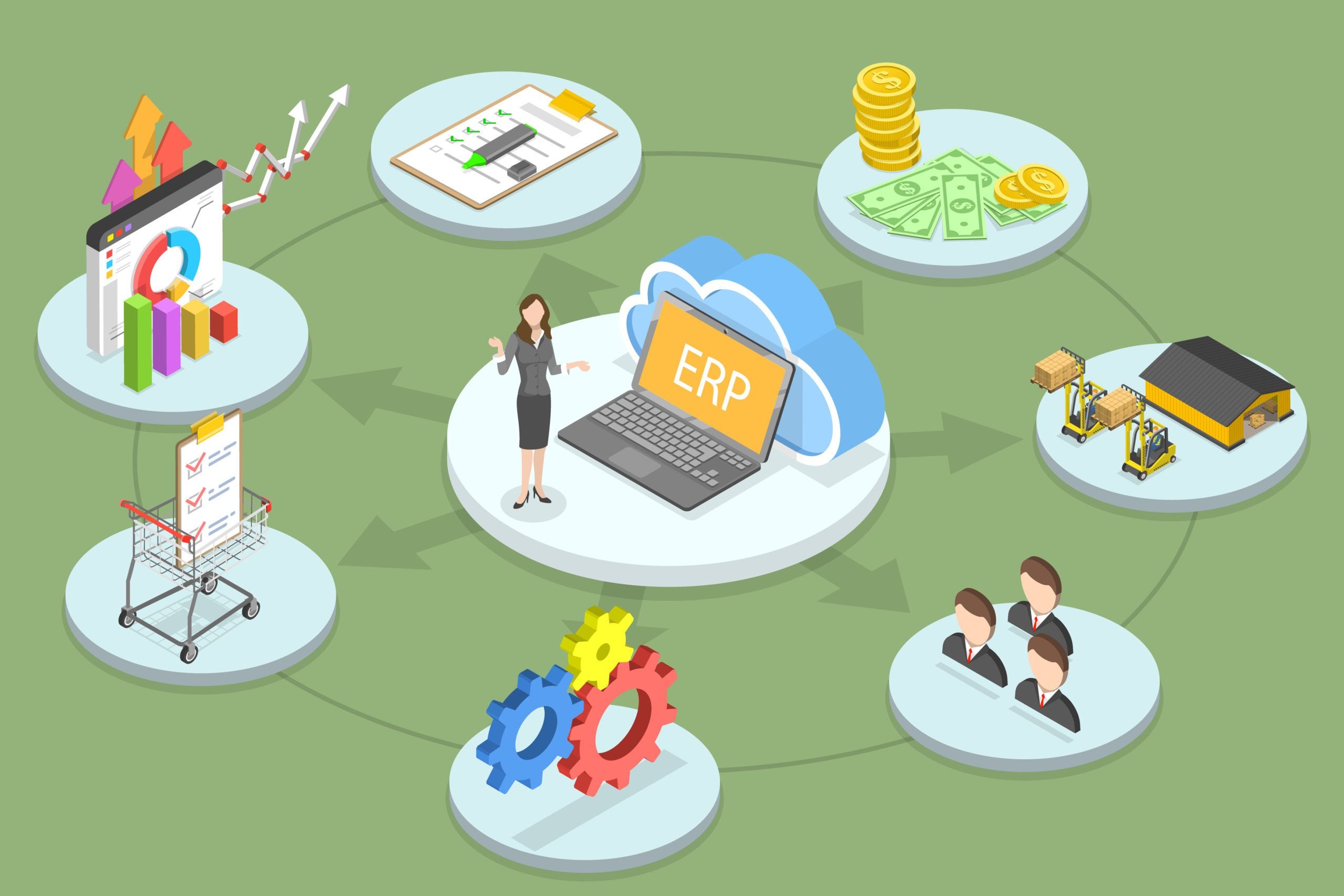WarnerMedia’s Asif Sadiq: ‘Brain Diverse’ Organizations Will Rule The Future
 Asif Sadiq is Senior Vice President for Equity and Inclusion at WarnerMedia International, where he ensures diversity and inclusion is embedded in all elements of a business, resulting in innovative, creative and inclusive products and services for WarnerMedia’s more than 30,000 employees worldwide. Sadiq sat down with Joe Kornik, VISION by Protiviti’s Editor-in-Chief, to discuss the role of diversity and inclusion in the future of work.
Asif Sadiq is Senior Vice President for Equity and Inclusion at WarnerMedia International, where he ensures diversity and inclusion is embedded in all elements of a business, resulting in innovative, creative and inclusive products and services for WarnerMedia’s more than 30,000 employees worldwide. Sadiq sat down with Joe Kornik, VISION by Protiviti’s Editor-in-Chief, to discuss the role of diversity and inclusion in the future of work.
Kornik: You’ve spent your entire career focused on diversity and inclusion in the workplace. Before we talk about its future, I’m wondering where you see these matters currently?
Sadiq: When we look at diversity, I think it’s important to remember no person is defined by one singular dimension of diversity. Every one of us has multiple layers that make up our unique identities—someone’s female, bisexual, black or disabled. All these different elements create a unique identity. And therefore, the most important thing for me when I think about diversity is to start exploring it beyond a singular dimension because if we stick to a singular dimension within a workplace, we’re not seeing the whole picture of diversity. At most companies, diversity is based on the visible characteristics people see. The problem with that is you’re not truly understanding what matters to that person, and what will make them feel truly included in the workplace.
Read the original article from ChiefExecutive.net
Profit expectations fall at US companies, NABE says

Dive Brief:
- Expectations for second-quarter profit margins at U.S. companies sagged as wages and the cost of materials surged, according to a survey by the National Association for Business Economics (NABE). The percentage of survey respondents who expect profits to rise in the next three months fell to 22% in April from 29% in January.
- “Cost pressures are starting to impact profitability,” according to Jan Hogrefe, chief economist at Boeing and chair of the NABE Business Conditions Survey. NABE panelists have not expressed such a dim view of profits since the height of the pandemic in October 2020.
- Inflation was identified as the top risk by the largest share of panelists (37%), with three out of four respondents reporting rising materials costs and seven out of 10 saying they raised wages during the first quarter — the highest share in a data series that goes back 40 years.
Dive Insight:
CFOs concerned about the harm to profits from the biggest surge in price pressures in four decades need to also track the risk that an aggressive inflation-fighting campaign by the Federal Reserve may tip the economy into a recession.
Fed Chair Jerome Powell on Thursday indicated that policymakers will likely push up the federal funds rate by a half point at the end of a two-day meeting on May 4. It would be the first increase in the benchmark rate of that size since 2000.
Read the original article from CFO DIve
What effect will Russian sanctions have on your supply chain?

We’ve all seen the horrific scenes of the war on Ukraine and the reports of bombing civilian targets. There’s no question that the damage to infrastructure, buildings, industry and the citizens of Ukraine is devastating and will require many years to recover, if ever. Global supply chains are also being interrupted for anything that originates in Ukraine and Russia, or any business conducted in either country.
Sanctions imposed by the U.S. and European countries have had a profound effect on businesses and will most likely affect your global supply chains.
According to Interos, more than 2,100 U.S.-based companies have at least one tier-1 supplier in Russia, and 450 firms (U.S. and Europe) have tier-1 suppliers in Ukraine. But this is not where the real damage to supply chains is occurring.
More than 190,000 firms in the U.S. have tier-3 suppliers in Ukraine or Russia. Tier-3 suppliers provide much of the world’s raw materials including aluminium, neon gas and rare earth elements used in the production of all semiconductors and electronics. If raw materials are not available, this will stop or severely slow the manufacturing of all kinds of products worldwide. We are still reeling from the effects of the pandemic on semiconductors. Another question is—are we likely to experience even more shortages due to the unavailability of neon gas and rare earth elements?
Read the original article from SCMR
Driving Leads In-Person and Online to Find the Best Path to Conversions
No matter your business model, converting sales leads to actual sales is important to your success. But what is the best path to converting customers? There are endless ways you can approach and incentivize your customer base. From in-person marketing to running online ad campaigns on social media, the choices available to you can be overwhelming. You’ve reached a fork in the road as to which marketing path to take. Now, consider this comparison of in-person and online conversion strategies to help you win customers.
Driving Leads In-Person
First, let’s explore the benefits, drawbacks, and strategies that come with driving leads in person. These face-to-face marketing methods have certainly taken a hit in the pandemic era. As the digital economy grew, in-person marketing took a back seat. However, by interacting with your customers directly, you can promote your brand in all kinds of creative ways. These won’t be the best options for all businesses, though. Here’s what you should know about driving leads in person.
Benefits
There are a lot of positives to “taking to the streets,” as they say, with your marketing approach. Having a direct line to your potential customers means reaping certain rewards only a face-to-face line can produce. These benefits include but certainly are not limited to
- Enhanced ability to build customer relationships with your brand by giving it a human face.
- Instant feedback cultivation through reading facial expressions, hearing direct verbal feedback, and seeing for yourself how products and services are received.
- Immediacy of response with the means to answer questions and concerns directly and build interest.
Drawbacks
However, an in-person approach won’t work for every marketer. While we’re still coming out of a pandemic, safety is a real concern for physical gatherings. This makes stop-and-greets even riskier than they always have been. Pandemic concerns aside, you run the risk of other disadvantages when conducting marketing in person. These disadvantages include
- Annoying customers with marketing efforts they may not be open to.
- Investing money in events, fliers, and advertising with uncertain attendance.
- Lack of managerial oversight in how all messaging is relayed to an audience.
Strategies
These drawbacks may not be drawbacks at all with the proper preparation and research. Similarly, these benefits won’t be beneficial without the same. Any in-person strategy should begin with an exploration of your target audience. Find yours through data collection, a data-driven plan, and thorough market research. A/B testing is one step you should always take as you compare the reception of different strategies. From here, gauge the receptiveness of your audience to offline marketing tools like the following:
- Develop and pass out unique and memorable business cards.
- Give out promotional materials and SWAG.
- Engage in local events and support local communities.
With these considerations in mind, explore the potential of an in-person approach to marketing. You can generate more leads and convert more customers if they feel an attachment to your business. In-person marketing can often achieve this better than anything else, but you’ll want to explore online lead driving methods as well.
Driving Leads Online
The Internet is the place to be for most businesses these days. The pandemic boosted social media use to 3.81 billion people, a market penetration rate of 49% of the global population. This is huge and representative of a powerful resource for marketers. That said, these online marketplaces are saturated with marketing content, meaning you might have a hard time standing out. Consider the benefits, drawbacks, and strategies of online lead conversion before planning your approach.
Benefits
An effective approach to online lead conversions will help you build a strong following. With the accessibility and convenience of the Internet, a broader audience of loyal customers awaits. Achieving this, however, requires comprehensive SEO strategies and thorough research of your market to become visible in the crowded digital landscape. If done successfully, online lead driving can lead to benefits like the following:
- Long-term scalability in a global marketplace.
- Sustained customer attention through customer outreach, engagement, and relevant content.
- Visibility on growing platforms for customer engagement, with half the world as a potential audience.
Drawbacks
Just as there are benefits to online lead driving, there are also negatives. Your efforts may not go nearly as far as you want. Competition abounds, and garnering customer attention through marketing campaigns on the web may be more costly than you might think. Consider these drawbacks as you evaluate a lead conversion strategy that works for you:
- High competition on the global marketplace that is the Internet means your marketing content has to offer a truly unique value proposition.
- Online marketing campaigns tend to have low rates of recall, making it difficult to get customers to remember your brand.
- Cost per click for digital advertising averages between $1-$3, making this a potentially expensive route for driving leads.
Strategies
Again, the benefits and drawbacks of online marketing for lead conversion depend on the strategies you employ. Tools and software can help you make the most of online strategies, however. For example, quality SEO tools allow you to plan, edit, and analyze keywords and content for maximized visibility. When assisting in strategies like the following, such tools can transform your marketing:
- Use social media to research and connect with your leads.
- Enhance your SEO through the creation of highly relevant, quality content that your audience will find valuable.
- Create a comprehensive analytics process with customer and industry data to elevate your online marketing strategies with facts.
As you navigate the potential of online lead conversion tactics, explore these factors in the equation. Online marketing isn’t always right for your budget or business model, but a healthy dose of it sprinkled into your marketing strategies can be highly beneficial.
Finding the Best Path for Your Conversion Rates
There is no singular right answer for taking a more in-person or online approach to converting your leads. The best path to converting your customers could fall more in line with one or it could be a thorough blend of both. The important thing is to understand your audience. Your customers will determine what conversion strategies work best for them, so reach out. Talk to them. Do your research, and come away with the means to elevate your marketing for the modern economy.
Automating payment operations to get a full view of company finances

When payment operations aren't efficient or rely heavily on manual processes, CFOs can't manage their accounts as effectively or gain immediate insight into their financial state.
Almost half of finance leaders (48%) at companies with 500 to 5000 employees say it is hard to get a complete financial view of their company with their current finance and payment operations systems, a recent Harris Poll found.
This often occurs because they don't have a consolidated portal to get that information, especially because companies have multiple bank partners and use multiple systems to manage payments.
Payment operations include the full life cycle of money movement, from when a payment is initiated, to whether it gets completed or fails, to when it reconciles. Most companies don't have the right software to get a full view into finances, or they use disparate tools and even manual systems. The resulting lack of real-time insight into finances affects a broad array of issues, including:
Cash management. Sometimes, companies will keep too much cash on hand to cover payment settlement risks. Other times, they'll keep too little. Neither is optimal, but companies are well acquainted with delays in payment operations. Nearly 1 in 2 financial decision-makers (48%) say their company experiences reconciliation issues at least half the time when making or receiving payments. The disconnect between available cash and payment obligations multiplies if companies partner with numerous banks.
Read the original article from CFO DIve
4 Ways to Keep Your Firm Safe From Cyber Attacks
The growth of shadow IT has made it more difficult for businesses to keep their data and systems safe from cyber attacks. Here are four ways to help prevent these attacks:
1. Educate Your Employees
Make sure your employees know the risks associated with using unauthorized applications and services. Help your employees understand shadow IT and how to pick up on anything that may be a scam. Train them to identify phishing attempts and other signs of malicious activity.
Most companies nowadays have some sort of cyber security policy in place, but employees are often the weakest link to safeguarding against cyber threats. This is because many people are unaware of the risks posed by their everyday actions online. Clicking on malicious links or opening attachments from unknown senders can lead to malware being installed on a company network.
Once malware is present, it can be used to steal sensitive data or launch attacks on other systems. This is why it's so essential for employees to be educated on cyber attacks. Employees can be more careful when using company computers and devices by raising awareness of the dangers.
2. Implement Strong Security Controls
There are many steps that organizations can take to prevent cyber threats, but some of the most important is implementing strong security controls. Security controls help protect systems and data from unauthorized access or modification, and they can be both physical and logical. Physical controls might include things like access control systems and security cameras, while logical controls might include things like firewalls and encryption.
Make sure you have robust security measures, including firewalls, intrusion detection, prevention systems, and encryption. Regularly test your systems to ensure they are effective against the latest threats. By implementing a combination of both types of controls, organizations can make it much more difficult for cybercriminals to succeed.
3. Restrict Access to Critical Data and Systems
One key element of strong cyber security is restricting access to data and systems. This helps to ensure that only authorized individuals can view or modify sensitive information. Access control measures can include things like requiring user authentication, setting permissions for who can access what, and auditing activity logs. Limit access to important data and systems to only those who need it. Use role-based access control to ensure that employees can only access the information and resources they need for their job.
Organizations should carefully consider who needs access to which resources and put in place appropriate controls to limit access accordingly. By doing so, they can help reduce the risk of unauthorized disclosure or modification of sensitive data.
4. Monitor Activity on Your Network
Monitoring network activity is one of the best ways to prevent cyber attacks. By keeping an eye on traffic patterns, it is possible to detect suspicious activity and take steps to block it. In some cases, it may also be possible to track down the source of an attack and take action against them.
Cyber attacks come in many forms, from viruses and malware to denial-of-service attacks. The goal of a cyber attack may be to steal data, cause disruption, or simply wreak havoc. There are a number of different tools that can be used for monitoring network activity.
Use data loss prevention tools to prevent sensitive data from being exfiltrated. Keep an eye out for any unusual behavior, such as unexpected spikes in traffic or new devices connecting to the network.
Final Thoughts
By following these steps, you can help keep your business safe from cyber-attacks. Shadow IT can be a major threat to businesses, but by taking steps to educate your employees and implement strong security controls, you can help reduce the risk of an attack.
Benefits of ERP: Weighing the Pros and Cons

A variety of industries and enterprise models use enterprise resource planning (ERP) software to organize and better connect their business applications. With the help of ERP solutions, users can automate, integrate, and create more visibility into how business processes are running, all while eliminating unnecessary IT tool sprawl.
Despite all of the benefits of ERP, businesses run certain risks when they invest in ERP without full knowledge of what the tool can do and how it should be set up and used. Weighing the pros and cons of ERP software ensures that organizations invest the right time, cost, people, and resources into selecting a solution that works.
Pros of implementing an ERP solution
ERP platforms offer a variety of efficiencies to enterprise teams, with improved data quality and management, increased collaboration, and new app integrations to simplify workflows
Data quality and process standardization
Most instances of ERP software rely on single-source-of-truth mega-databases, which pull data from business applications that have been integrated into the ERP. This larger database consolidates data from applications like customer relationship management (CRM) platforms and human resources information system (HRIS) software, which collect data from a variety of business departments and use cases.
Having different user profiles and documentation stored in one place not only makes for easier navigation and administrative visibility but also improves data quality and process standardization. Users can catch and correct data errors that have proliferated in one application or departmental process based on standardized data sets in the ERP.
Compliance and administrative controls
Many ERP platforms include automated policy management support, and some include specific support for regulations like GDPR and HIPAA. Greater administrative visibility and control over enterprise apps, data, and workflows make it easier for an enterprise team to maintain security, assess performance, audit operations, and meet compliance requirements.
Read the original article from CIO Insight
Magnetism: Core Values As Connectors, Not Constraints

Core values can both drive value and serve as connectors to a broader ecosystem. Ensuring that values serve as the basis for organizational decisions from the board to the staff level pays multiple dividends. But what about values makes them connectors and not constraints?
To separate the funding from the science, the Institute for the Advancement of Food and Nutrition Sciences (IAFNS) revised and updated for publication a set of ‘Guiding Principles for Funding Food Science and Nutrition Research’ to provide conflict-of-interest guidance protecting the integrity and credibility of the scientific record.
These guiding principles are an extension of our core value of scientific integrity. We reflect on this and our other three core values—transparency, collaboration and public benefit—to see what our experience has been over our initial year as an independent organization.
What stands out immediately is not how our core values constrain what we do but how they help expand and leverage our efforts to deliver science with impact and enhance informed communities.
Read the original article from ChiefExecutive.net
Rethinking sustainable packaging commitments
While having sustainability initiatives in place has been a business imperative for most companies for several years now, efforts specifically geared towards sustainable packaging are still a relatively new focus area for most.

The first set of modern goals were initiated around 2018. Much of the corporate, academic and government alignment was driven by the Ellen MacArthur Foundation (EMF) and the EMF New Plastics Economy Global Commitment. One of EMF’s key visions for the future of sustainable packaging is the commitment to 100% of plastic packaging being recyclable, reusable or compostable.
In recent years, companies have begun to set ambitious goals for sustainable packaging. However, there is a significant gap today between these goals and organizations’ ability to not only achieve authentic sustainability targets, but, more urgently, to achieve their short-term goals.
Accordingly, in Gartner’s Supply Chain Predicts for 2022 sustainable packaging was identified as an area that needs urgent attention. Specifically, the predict states “by 2025, 90% of public sustainable packaging commitments won’t be met due to reliance on plastics and single-use packaging.”
With Earth Day celebrations on April 22, many organizations reflect on progress they have made on sustainability goals. While some tout their successes, strong consideration should be given to why so few are on a path to meeting sustainable packaging commitments. There are several contributing factors that are hindering progress for many.
Read the original article from SCMR
Company valuations are being affected differently by the geopolitical storm

The war in Ukraine, lingering effects of the pandemic, inflation and other macroeconomic and geopolitical factors are hitting all at once but fair value determinations still depend on individual business and operational factors, valuation specialists said in a Kroll webcast last week.
The uncertainty caused by the war and the spike in energy costs it’s unleashed, among other things, can make the market seem a lot like the beginning of the pandemic two years ago, when executives and investors struggled for a clear picture of what was happening.
But the environment today is less like the beginning of the pandemic and more like the later months when it became clear COVID-19 was creating winners and losers rather than bringing everybody down equally.
“At the time there was so much uncertainty,” said Ryan McNelley, managing director and portfolio valuation leader for the European market at Kroll. “The prevailing view was it would impact everybody to a similar degree but what we learned was the impact was more spotty. As we sit here in 2022 … what we’re hearing from our clients is it’s much more case-by-case than it was two years ago.”
Even for companies that have exposure to the Russian oil and gas industry, which is reeling from Western sanctions and government-mandated disinvestment, it would be a mistake to simply write down valuations to zero in the belief calculating a fair value is impossible.
Read the original article from CFO DIve



